MARKET OVERVIEW
The Global Dental Glass Market, within the broader dental industry, is a dynamic arena witnessing constant innovation and transformation. Dental glass finds extensive application in various dental procedures, ranging from restorative dentistry to cosmetic enhancements. Its significance lies in its versatility and adaptability to diverse dental needs, playing a pivotal role in modern dentistry.
In the realm of dental materials, dental glass stands out for its unique properties and functionalities. Composed of specialized glass compositions, it offers a combination of strength, aesthetics, and biocompatibility crucial for dental applications. These glasses are meticulously engineered to meet the stringent requirements of dental prosthetics, ensuring durability and longevity.
One of the primary applications of dental glass lies in dental restorations, where it serves as a fundamental component in dental composites and cements. These materials are utilized in filling cavities, repairing fractures, and bonding dental structures, providing patients with functional and aesthetically pleasing solutions. Moreover, dental glass plays a crucial role in the fabrication of dental crowns, bridges, and veneers, contributing to the restoration of damaged or missing teeth.
Beyond restorative dentistry, dental glass finds extensive use in cosmetic dentistry, where aesthetics play a paramount role. Through the development of innovative glass-ceramic materials, dental professionals can achieve lifelike tooth restorations that seamlessly blend with natural dentition. These materials exhibit exceptional translucency and color-matching capabilities, enabling the creation of flawless smiles that enhance patients' confidence and well-being.
Furthermore, the evolution of dental glass extends to the realm of dental implants, where bioactive glasses are gaining prominence. These glasses possess the unique ability to stimulate bone regeneration and integration, facilitating the osseointegration process crucial for implant success. As a result, they hold immense potential in improving the outcomes of dental implant procedures, offering patients enhanced stability and functionality.
In addition to its clinical applications, the Global Dental Glass Market is characterized by ongoing research and development initiatives aimed at expanding its functionalities and applications. Future advancements in material science and manufacturing technologies are poised to further elevate the capabilities of dental glass, paving the way for novel treatment modalities and solutions in dentistry.
Moreover, the increasing emphasis on preventive dentistry and minimally invasive procedures is expected to drive the demand for dental glass materials. As dental professionals prioritize conservative treatment approaches and patient-centric care, the role of dental glass in facilitating less invasive and more conservative treatment options will become increasingly significant.
The Global Dental Glass Market represents a dynamic and evolving segment within the dental industry, driven by innovation, research, and clinical advancements. With its diverse applications, ranging from restorative to cosmetic dentistry, dental glass continues to play a pivotal role in shaping the future of modern dentistry, offering patients and practitioners alike a pathway to improved oral health and enhanced aesthetic outcomes.
Global Dental Glass market is estimated to reach $2,272.9 Million by 2031; growing at a CAGR of 2.0% from 2024 to 2031.
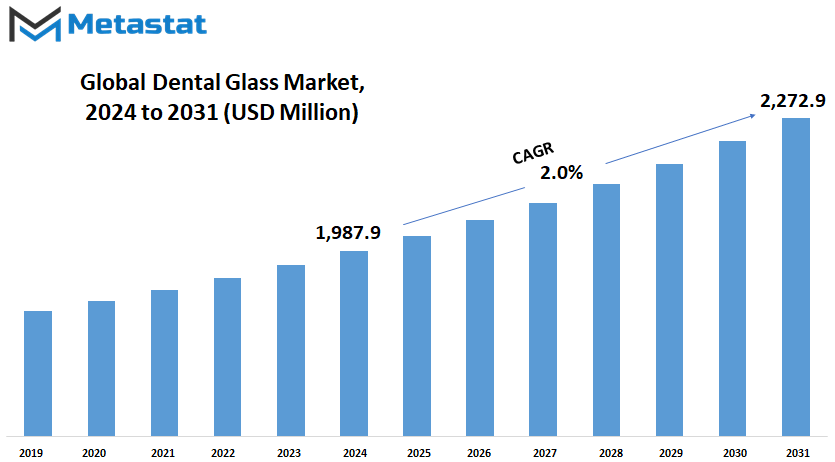
GROWTH FACTORS
The global dental glass market is witnessing growth propelled by several factors. One primary factor is the increasing prevalence of dental disorders worldwide, coupled with a rising demand for dental procedures. As more people encounter dental issues, the need for effective treatment options, including those utilizing dental glass materials, becomes more pronounced.
Moreover, technological advancements in dental materials, particularly those based on glass, are playing a significant role in driving innovation within the field of dental treatments. These advancements are enabling dentists to offer more efficient and durable solutions to their patients, thereby improving overall dental care outcomes
However, despite these promising developments, the market faces certain challenges that could impede its growth trajectory. One such challenge is the limited availability of skilled professionals capable of performing specialized dental procedures utilizing dental glass. As these procedures require a high level of expertise, the scarcity of qualified professionals could potentially restrict the adoption of advanced dental glass technologies.
Additionally, the high costs associated with advanced dental glass materials and technologies pose another obstacle to market growth. For many patients, the expense involved in accessing these cutting-edge treatments may act as a deterrent, limiting their willingness to opt for such procedures.
Despite these challenges, there are opportunities for the market to expand further in the coming years. One such opportunity lies in the growing awareness among both patients and healthcare providers about the benefits of minimally invasive dental procedures using dental glass. These procedures offer numerous advantages, including reduced treatment times, less discomfort for patients, and improved aesthetic outcomes. As awareness about these benefits continues to increase, it is likely to fuel the demand for dental glass materials and technologies, creating lucrative opportunities for market players.
The global dental glass market is poised for growth, driven by factors such as the increasing prevalence of dental disorders and technological advancements in dental materials. While challenges such as the scarcity of skilled professionals and high costs may present hurdles, the growing awareness about the benefits of minimally invasive dental procedures using dental glass will likely pave the way for future market expansion.
MARKET SEGMENTATION
By Type
The global dental glass market is segmented into different types, including Barium Based, Borosilicate Based, Zinc Based, Strontium Based, and Others. Each type serves specific purposes and offers unique properties that cater to various dental applications.
Barium-based dental glass is one of the commonly used types in the market. It is known for its excellent radiopacity, which means it can be easily seen on X-ray images. This property is crucial in dental procedures where precise imaging is required for accurate diagnosis and treatment planning. Dentists rely on barium-based dental glass to ensure clear visibility of dental restorations and fillings on X-ray films, allowing them to monitor patients' oral health effectively.
Borosilicate-based dental glass is another significant player in the market. It is favored for its high strength and durability, making it suitable for dental restorations that require resilience against wear and tear. Dentists often use borosilicate-based dental glass for fabricating crowns, bridges, and dental implants that need to withstand the daily stresses of chewing and biting. Its robust nature ensures long-lasting dental prosthetics that can endure the rigors of everyday use.
Zinc-based dental glass is valued for its antimicrobial properties, which help prevent bacterial growth and reduce the risk of dental infections. Dentists often incorporate zinc-based dental glass into dental materials such as cements and sealants to create a hygienic environment within the oral cavity. This proactive approach to oral health maintenance promotes better overall dental hygiene and reduces the likelihood of complications arising from bacterial colonization.
Strontium-based dental glass offers unique remineralization properties that support tooth enamel regeneration and repair. Dentists utilize strontium-based dental glass in restorative materials such as dental composites and varnishes to promote tooth remineralization and strengthen weakened enamel. By harnessing the natural remineralizing capabilities of strontium-based dental glass, dentists can enhance the longevity of dental restorations and protect patients' oral health for years to come.
Other types of dental glass encompass a diverse range of compositions and properties tailored to specific dental applications. These include specialty glasses designed for aesthetic dental treatments, such as tooth-colored fillings and veneers, as well as glasses formulated for niche dental procedures, such as endodontic therapy and orthodontic appliances. By offering a comprehensive array of dental glass options, the global dental glass market will continue to meet the evolving needs of dental professionals and patients worldwide, driving innovation and advancements in dental care.
By Application
The Global Dental Glass market is segmented based on its application, with three main categories: Hospitals, Dental Clinics, and Others. In dentistry, the use of dental glass has become increasingly prevalent. It finds application in various settings, catering to the diverse needs of patients and practitioners alike.
Hospitals represent a significant portion of the market share for dental glass. Within hospital settings, dental glass is utilized for a range of purposes, including restorative procedures, cosmetic enhancements, and preventive treatments. The versatility and adaptability of dental glass make it a valuable asset in addressing the diverse dental needs of patients admitted to hospitals.
Dental clinics also constitute a substantial segment of the market for dental glass. These specialized facilities focus specifically on dental care, offering a wide array of services to individuals seeking oral health solutions. Dental glass is extensively employed in clinics for procedures such as fillings, crowns, bridges, and veneers. Its aesthetic appeal, durability, and biocompatibility make it a preferred choice among dental practitioners and patients alike.
Apart from hospitals and dental clinics, the application of dental glass extends to other settings categorized under the label "Others." This category encompasses a range of contexts where dental services are provided outside traditional healthcare institutions. These may include private dental practices, community health centers, mobile dental units, and educational institutions offering dental training programs. In these diverse settings, dental glass serves as a vital component in various dental procedures, contributing to the delivery of quality oral healthcare services.
The segmentation of the Global Dental Glass market based on application reflects the multifaceted nature of dental care delivery. As advancements in dental technology continue to drive innovation, the demand for dental glass across different application areas will likely witness further growth. This trajectory is propelled by factors such as increasing awareness of oral health, rising incidence of dental disorders, and expanding access to dental services worldwide.
The Global Dental Glass market is characterized by its segmentation into Hospitals, Dental Clinics, and Others based on application. Each segment represents a distinct yet interconnected facet of the dental care landscape, wherein dental glass plays a pivotal role in addressing the diverse needs of patients and practitioners. Looking ahead, the market for dental glass will continue to evolve, driven by ongoing technological advancements and the growing emphasis on oral health and well-being.
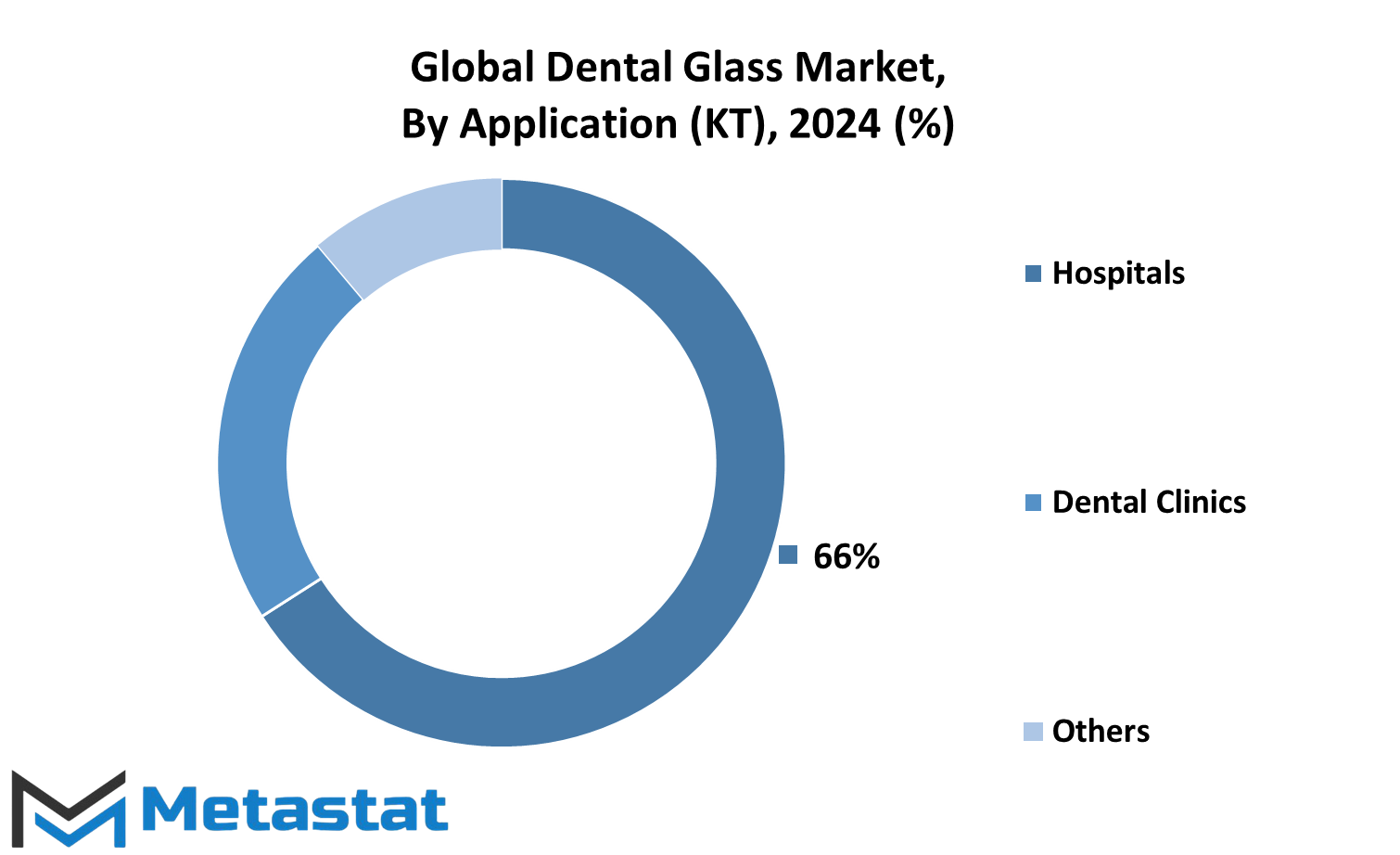
REGIONAL ANALYSIS
The global Dental Glass market is analyzed based on different regions around the world. These regions include North America, Europe, Asia-Pacific, South America, and the Middle East & Africa. Each of these regions is further broken down into smaller geographical areas to provide a more detailed view.
In North America, the market is segmented into the United States, Canada, and Mexico. This division allows for a focused examination of how dental glass products are consumed and distributed within these countries. Similarly, Europe is divided into the United Kingdom, Germany, France, Italy, and the Rest of Europe. This subdivision aids in understanding the varying trends and preferences within the European market.
Moving on to Asia-Pacific, this region is segmented into India, China, Japan, South Korea, and the Rest of Asia-Pacific. The division of Asia-Pacific into these smaller areas enables a closer analysis of the dental glass market in some of the largest and fastest-growing economies in the world.
In South America, the market consists of Brazil, Argentina, and the Rest of South America. Understanding the dynamics within these countries helps in identifying opportunities and challenges specific to the South American market. Lastly, the Middle East & Africa region is categorized into GCC Countries, Egypt, South Africa, and the Rest of Middle East & Africa. This segmentation allows for a nuanced examination of the dental glass market in regions with unique socio-economic factors and healthcare landscapes.
By analyzing the global Dental Glass market on a regional basis, stakeholders can gain insights into the demand patterns, regulatory environments, competitive landscapes, and other factors influencing market growth in each geographical area. This approach helps in devising tailored strategies to capitalize on opportunities and address challenges in specific regions.
Looking ahead, as technology continues to advance and markets become increasingly interconnected, understanding regional nuances will remain crucial for businesses operating in the Dental Glass industry. By leveraging market intelligence and data analytics, companies will be better equipped to navigate the complexities of different regions and drive sustainable growth in the global Dental Glass market.
COMPETITIVE PLAYERS
The landscape of the global dental glass market is marked by the presence of several key players, each contributing to the industry's growth and competitiveness. These players are pivotal in shaping the market dynamics and influencing the trajectory of advancements in dental glass technology. Among the prominent players in this field are Schott, Ferro, 3M, James Kent Group, Shandong Huge Dental Material Corporation, Specialty Glass, Inc., Sukgyung AT Co., Ltd., Shanghai Rongxiang Dental Co., Ltd., Shofu, VOCO, Ivoclar Vivadent, Dentsply Sirona, Zirkonzahn, and GC.
The involvement of these key players in the dental glass market is set to have a significant impact on its future direction. As advancements in dental materials and technology continue to unfold, these companies will play a crucial role in driving innovation and pushing the boundaries of what is possible in dental care
One of the key factors driving competition among these players is the constant pursuit of excellence in product quality and performance. With the demand for dental glass products increasing worldwide, companies are under pressure to deliver solutions that meet the evolving needs of dentists and patients alike. This focus on quality and performance will continue to drive competition in the market, pushing companies to innovate and differentiate their offerings.
Moreover, the global nature of the dental glass market means that companies must also be adept at navigating the complexities of international trade and regulation. As the market expands into new regions and countries, companies will need to demonstrate agility and adaptability in order to succeed on a global scale. This will require a deep understanding of local market dynamics and regulatory requirements, as well as the ability to tailor products and strategies to meet the specific needs of each market.
In addition to product quality and regulatory compliance, companies in the dental glass market will also need to differentiate themselves through their marketing and branding efforts. With competition intensifying, companies will need to find creative ways to stand out from the crowd and capture the attention of customers. This may involve investing in innovative marketing campaigns, building strong brand identities, and establishing partnerships with key opinion leaders in the dental industry.
Overall, the future of the global dental glass market will be shaped by the competitive dynamics between key players in the industry. As companies continue to innovate and differentiate their offerings, they will play a critical role in driving advancements in dental care and improving outcomes for patients around the world.
Dental Glass Market Key Segments:
By Type
- Barium Based
- Borosilicate Based
- Zinc Based
- Strontium Based
- Others
By Application
- Hospitals
- Dental Clinics
- Others
Key Global Dental Glass Industry Players
- Schott
- Ferro
- 3M
- James Kent Group
- Shandong Huge Dental Material Corporation
- Specialty Glass, Inc
- Sukgyung AT Co., Ltd.
- Shanghai Rongxiang Dental Co.,Ltd
- Shofu
- VOCO
- Ivoclar Vivadent
- Dentsply Sirona
- Zirkonzahn
- GC
WHAT REPORT PROVIDES
- Full in-depth analysis of the parent Industry
- Important changes in market and its dynamics
- Segmentation details of the market
- Former, on-going, and projected market analysis in terms of volume and value
- Assessment of niche industry developments
- Market share analysis
- Key strategies of major players
- Emerging segments and regional growth potential



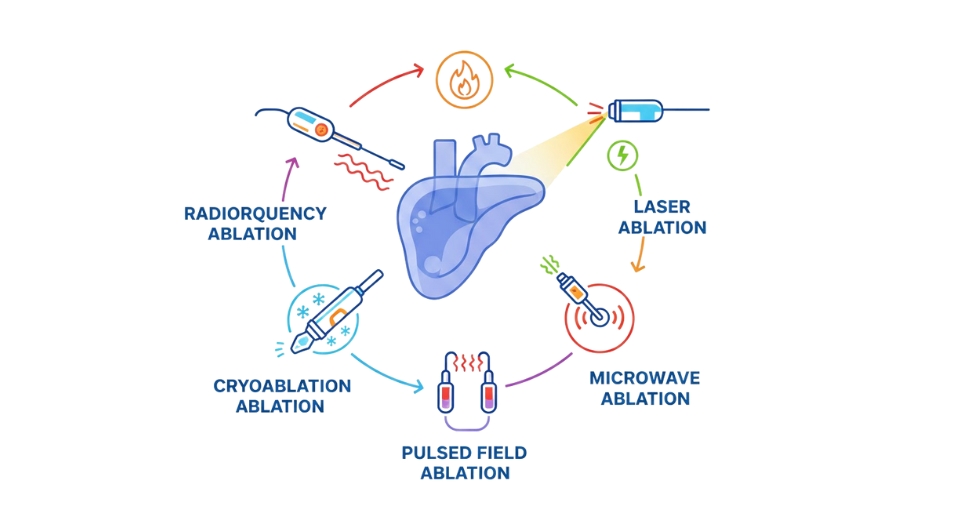

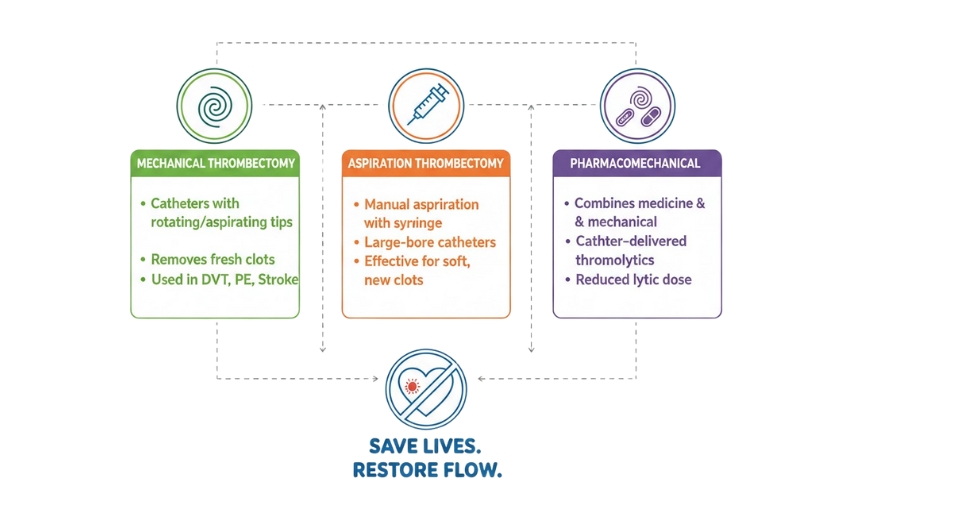
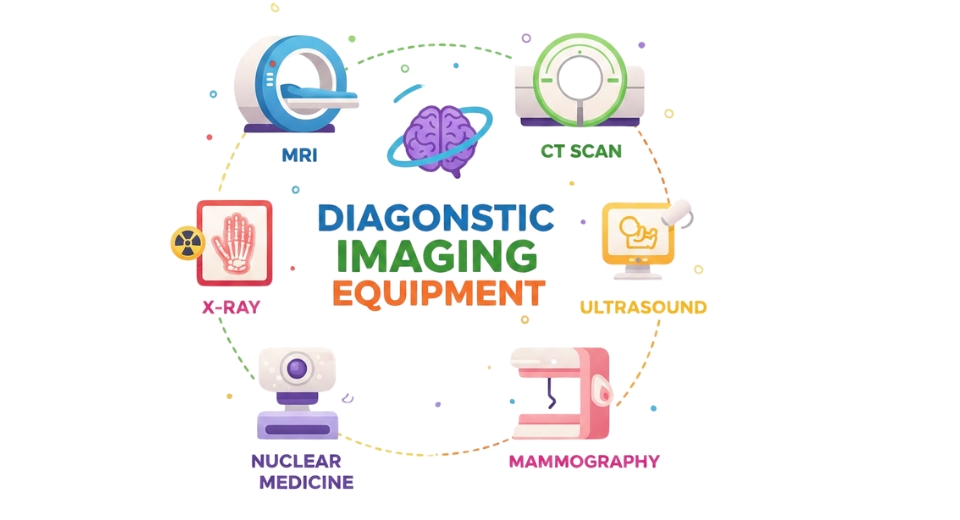

 US: +1 3023308252
US: +1 3023308252






